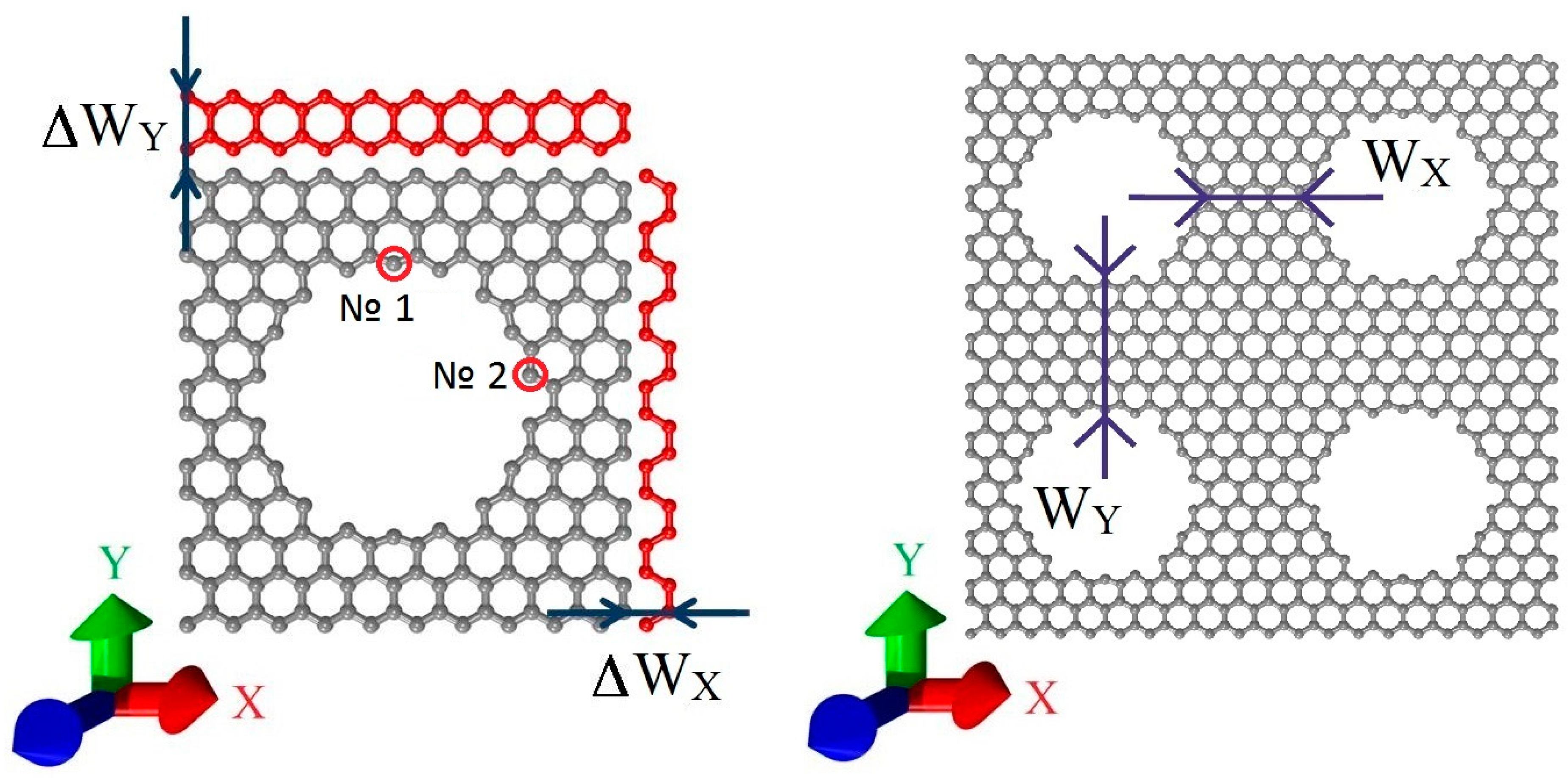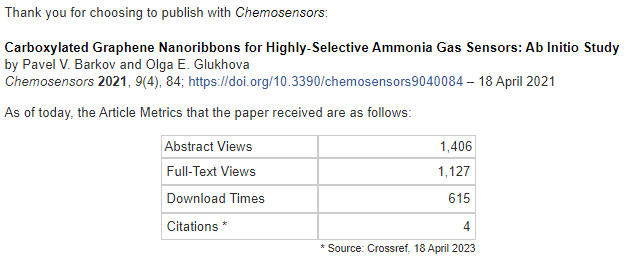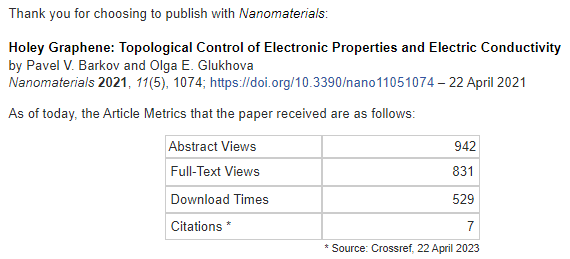The website of the MDPI publishing house - Publisher of Open Access Journals provides detailed metric statistics for two articles by the research team of Professor O.E. Glukhova.
The article "Carboxylated Graphene Nanoribbons for Highly-Selective Ammonia Gas Sensors: Ab Initio Study" published in the journal Chemosensors has 1406 abstract views, 1127 full text views, 615 downloads and 4 citations.
This article shows the nature and degree of influence of carboxyl groups (COOH) on the sensor properties (in particular, on the chemoresistive response) of a gas sensor based on zigzag and armchair nanoribbons. Calculations have shown that it is more promising to use a carboxylated zigzag nanoribbon as a sensor element. The chemoresistive response of such nanoribbons is higher than that of non-carboxylated and carboxylated armchair-type nanoribbons. It was also found that the wet nanoribbon reacts more noticeably to ammonia adsorption. In this case, carboxyl groups first of all attract water molecules, which are energetically favorable to land precisely on these regions, and then on the basal surface of the nanoribbon. In addition, COOH groups with water are adsorption centers for ammonia molecules.
The second paper, "Holey Graphene: Topological Control of Electronic Properties and Electric Conductivity", published in the journal Nanomaterials, has 942 abstract views, 831 full text views, 529 downloads, and 7 citations.
We study hole graphene with different neck widths (the smallest distance between two adjacent holes). For the structures considered, the energy gap, the Fermi level, the density of electronic states, and the distribution of the local density of electronic states are found. The electrically conductive properties of holey graphene with round holes were calculated depending on the width of the neck. It was found that, depending on the neck width, holey graphene demonstrates a semiconductor type of conductivity with a change in the band gap in the range of 0.01–0.37 eV. It was also shown that by changing the neck width, one can control the electrical conductivity of holey graphene.








